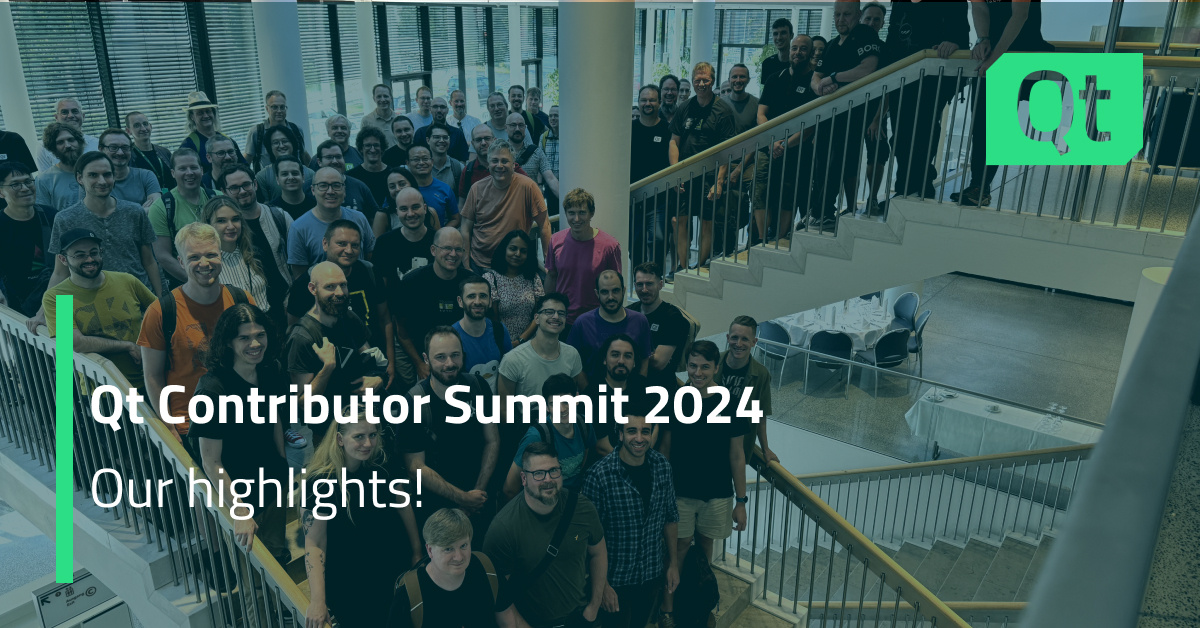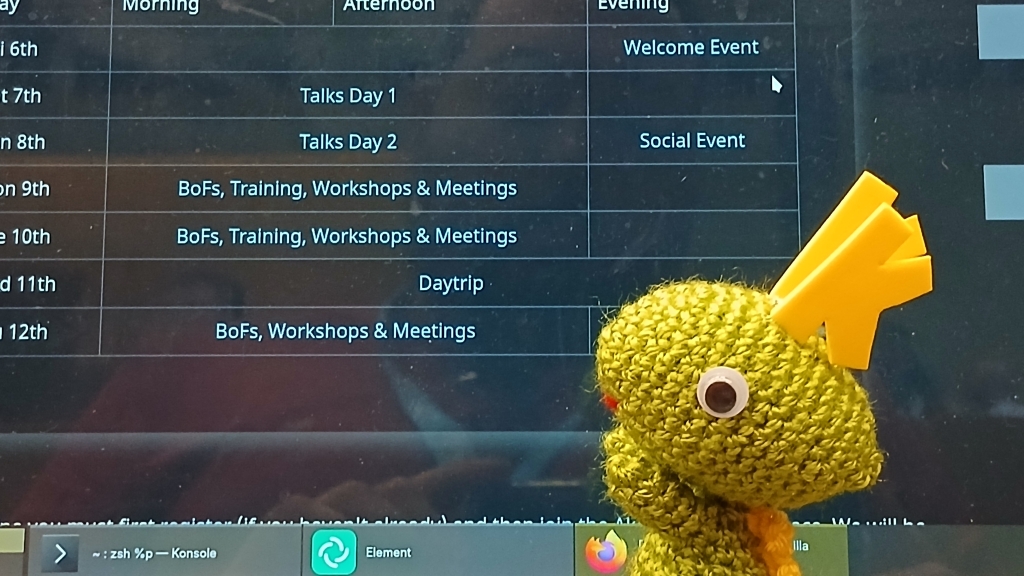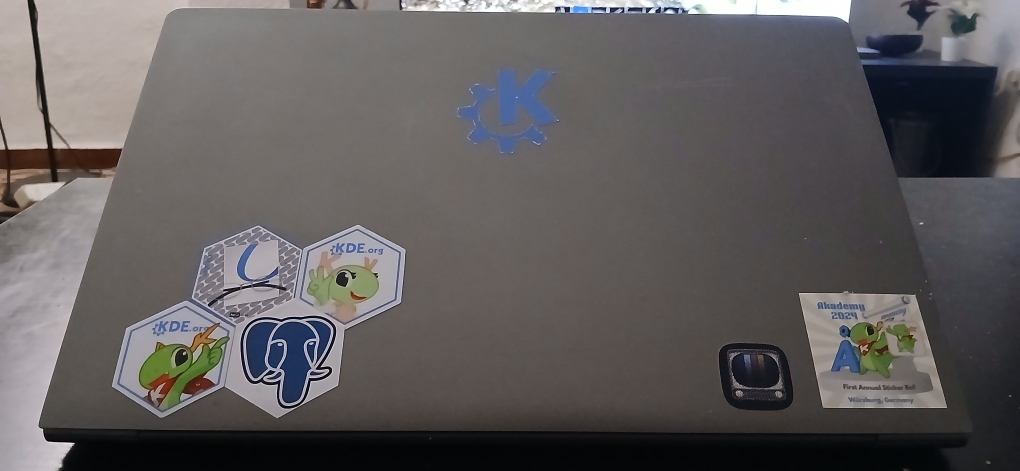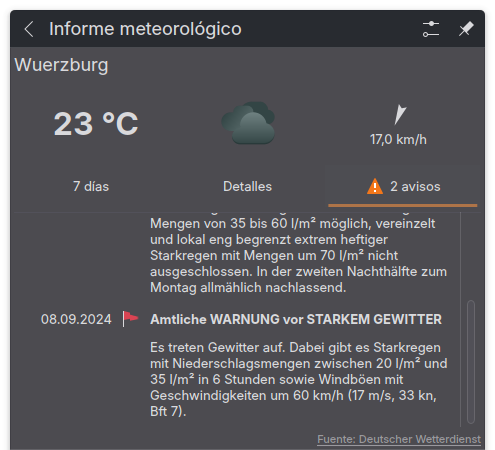Friday, 4 October 2024
A long over-due release which has accumulated a bunch of bugfixes but also some fancy new features…read on!
As always, big thanks to everyone who reported issues and contributed to QCoro. Your help is much appreciated!
QCoro::LazyTask<T>
The biggest new features in this release is the brand-new QCoro::LazyTask<T>.
It’s a new return type that you can use for your coroutines. It differs from QCoro::Task<T>
in that, as the name suggest, the coroutine is evaluated lazily. What that means is when
you call a coroutine that returns LazyTask, it will return imediately without executing
the body of the coroutine. The body will be executed only once you co_await on the returned
LazyTask object.
This is different from the behavior of QCoro::Task<T>, which is eager, meaning that it will
start executing the body immediately when called (like a regular function call).
QCoro::LazyTask<int> myWorker()
{
qDebug() << "Starting worker";
co_return 42;
}
QCoro::Task<> mainCoroutine()
{
qDebug() << "Creating worker";
const auto task = myWorker();
qDebug() << "Awaiting on worker";
const auto result = co_await task;
// do something with the result
}
This will result in the following output:
mainCoroutine(): Creating worker
mainCoroutine(): Awaiting on worker
myWorker(): Starting worker
If myWorker() were a QCoro::Task<T> as we know it, the output would look like this:
mainCoroutine(): Creating worker
myWorker(): Starting worker
mainCoroutine(): Awaiting on worker
The fact that the body of a QCoro::LazyTask<T> coroutine is only executed when co_awaited has one
very important implication: it must not be used for Qt slots, Q_INVOKABLEs or, in general, for any
coroutine that may be executed directly by the Qt event loop. The reason is, that the Qt event loop
is not aware of coroutines (or QCoro), so it will never co_await on the returned QCoro::LazyTask
object - which means that the code inside the coroutine would never get executed. This is the
reason why the good old QCoro::Task<T> is an eager coroutine - to ensure the body of the coroutine
gets executed even when called from the Qt event loop and not co_awaited.
For more details, see the documentation of QCoro::LazyTask<T>.
Defined Semantics for Awaiting Default-Constructed and Moved-From Tasks
This is something that wasn’t clearely defined until now (both in the docs and in the code), which is
what happens when you try to co_await on a default-constructed QCoro::Task<T> (or QCoro::LazyTask<T>):
co_await QCoro::Task<>(); // will hang indefinitely!
Previously this would trigger a Q_ASSERT in debug build and most likely a crash in production build.
Starting with QCoro 0.11, awaiting such task will print a qWarning() and will hang indefinitely.
The same applies to awaiting a moved-from task, which is identical to a default-constructed task:
QCoro::LazyTask<int> task = myTask();
handleTask(std::move(task));
co_await task; // will hang indefinitely!`
Compiler Support
We have dropped official support for older compilers. Since QCoro 0.11, the officially supported compilers are:
- GCC >= 11
- Clang >= 15
- MSVC >= 19.40 (Visual Studio 17 2022)
- AppleClang >= 15 (Xcode 15.2)
QCoro might still compile or work with older versions of those compilers, but we no longer test it and do not guarantee that it will work correctly.
The reason is that coroutine implementation in older versions of GCC and clang were buggy and behaved differently than they do in newer versions, so making sure that QCoro behaves correctly across wide range of compilers was getting more difficult as we implemented more and more complex and advanced features.
Other Features and Changes
A coroutine-friendly version of QFuture::takeResult() is now available in the
form of QCoroFuture::takeResult() when building QCoro against Qt 6 (#217).
QCoro::waitFor(QCoro::Task<T>) no longer requires that the task return type T is default-constructible (#223, Joey Richey)
Bugfixes
- Suppress Clang error when building against Android NDK <= 25 (#204, Daniel Vr√°til)
- Fixed missing QtGui dependency in QCoroQuick module (#209, Andreas Sturmlechner)
- Fixed
QCoroIODevice::write()always returning 0 instead of bytes written (#211, Daniel Vr√°til) - Fixed unchecked
std::optionalaccess inQCoroIODevice::write - Fixed awaiting on signal emission with
qCoro()would resume the awaiter in the sender’s thread context (#213, Daniel Vr√°til) - Fixed build wilth clang 18 due to missing
#include <exception>(#220, Micah Terhaar) - Fixed crash when
QNetworkAccessManageris destroyed from a coroutine awaiting on a network reply (#231, Daniel Vr√°til)
Full changelog
Support
If you enjoy using QCoro, consider supporting its development on GitHub Sponsors or buy me a coffee on Ko-fi (after all, more coffee means more code, right?).

 dvratil
dvratil







 @genericity:matrix.org
@genericity:matrix.org





 soumyatheman
soumyatheman GSoC
GSoC